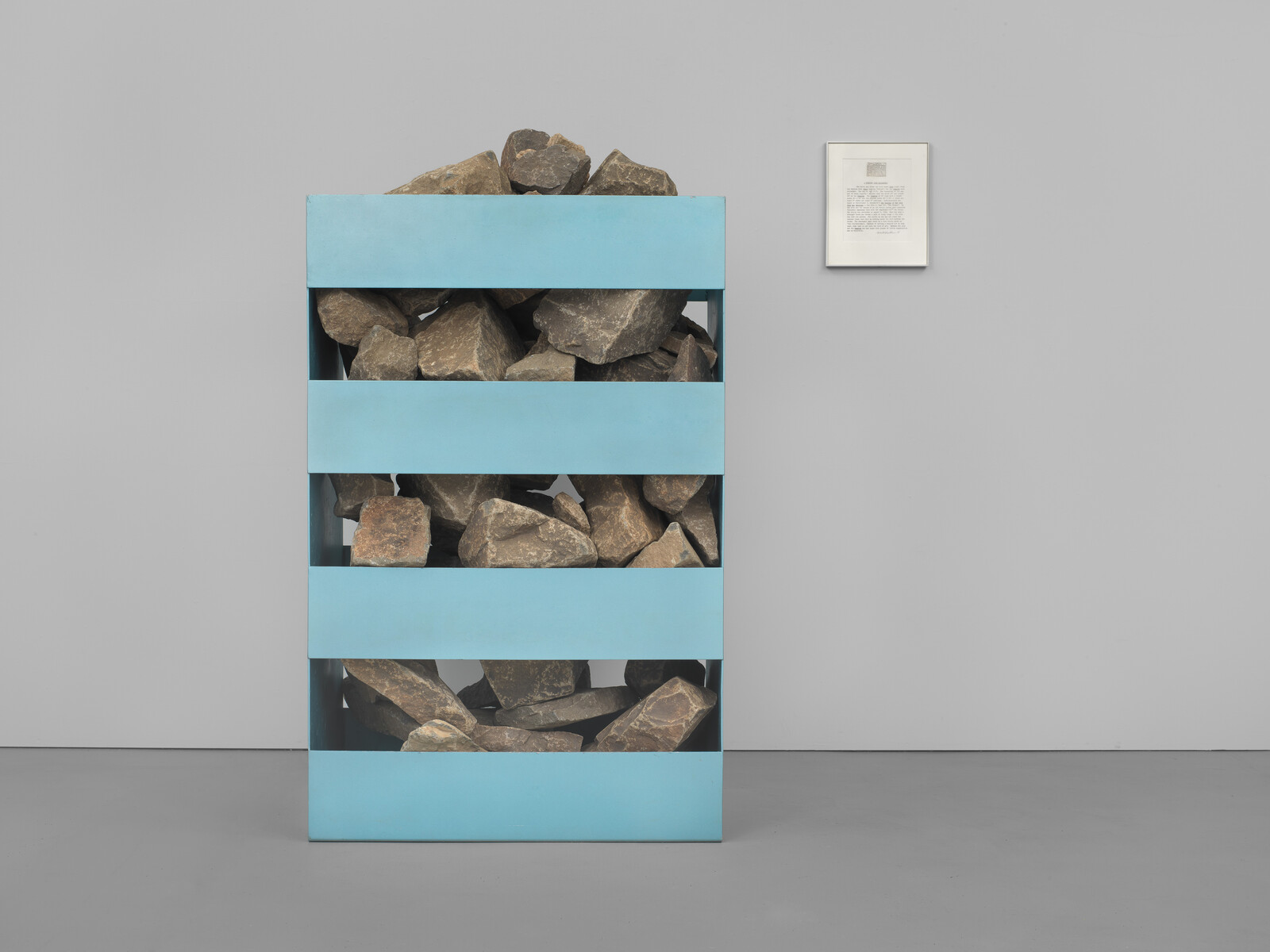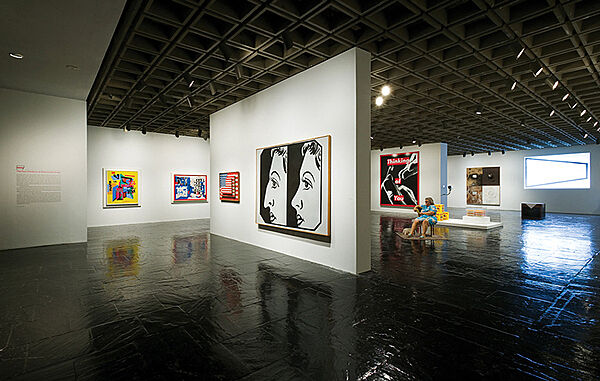Non-sites is the title Robert Smithson gave to a group of geologically and geographically based works he began in 1968. Hybrids comprised of minerals, metal containers, photographs, maps, and other documents, they encompass both the geographical source of his natural materials (the “site”) and their packaged relocation in a museum or gallery (the “non-site”), where they become legible as sculpture. In Non-site (Palisades—Edgewater, N.J.), Smithson extracted rock from the area of an abandoned trolley system in his native New Jersey, placing the pieces in an open-slatted aluminum bin that echoes the pattern of the rail tracks as well as the contemporary work of Minimalist artists such as Donald Judd, with its industrial materials and horizontal pattern. Smithson selected the site for the way it illustrated the passage of time—through the local geology, the decay of the trolley line, and the gradual integration of nature and technology. As he explained in the accompanying text panel, “what was once a straight track has become a path of rocky crags—the site has lost its system.”
Not on view
Date
1968
Classification
Sculpture
Medium
Enamel on aluminum with stones and ink on paper drawing
Dimensions
Dimensions variable
Accession number
69.6a-b
Credit line
Purchase, with funds from the Howard and Jean Lipman Foundation, Inc.
Rights and reproductions
© Estate of Robert Smithson / Licensed by VAGA at Artists Rights Society (ARS), New York



